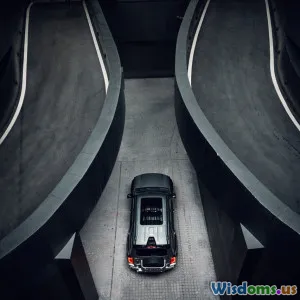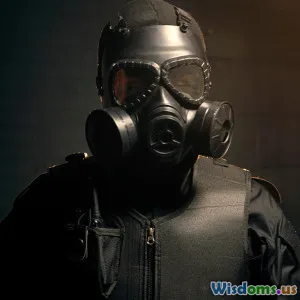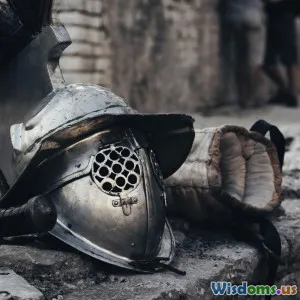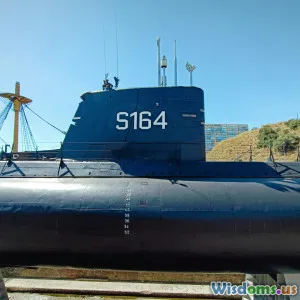
Can Compact Pistols Outperform Full Size Models in Real Combat
9 min read Explore whether compact pistols can truly outperform full-size models in real combat scenarios, analyzing their advantages and limitations. (0 Reviews)
Can Compact Pistols Outperform Full Size Models in Real Combat?
Introduction
When it comes to firearms, debates about size often spark passionate discussions, especially among shooters, law enforcement, and military personnel. One of the critical questions repeatedly asked is: Can compact pistols genuinely outperform full-size models in real combat scenarios? Size matters in firearms, but its impact isn’t always straightforward. Compact pistols offer distinct advantages—they’re smaller, easier to conceal, and convenient for close-quarters situations. Yet full-size models often win praise for better ergonomics, higher capacity, and superior accuracy.
In this in-depth article, we’ll explore the practical realities behind this debate, supported by expert insights, real-world examples, and technical analyses. Whether you’re a seasoned professional or a civilian firearms enthusiast, understanding the nuances can help you make an informed choice about your sidearm.
The Arsenal: Understanding Compact vs. Full-Size Pistols
What Defines a Compact Pistol?
Compact pistols are designed to be smaller and more concealable than their full-size counterparts without sacrificing too much in terms of capacity or performance. Typically, compact pistols have barrel lengths between 3 to 4 inches and reduced grip size to enhance concealability. Examples include the Glock 19, Smith & Wesson M&P Compact, and SIG Sauer P320 Compact.
Characteristics of Full-Size Models
Full-size pistols usually feature longer barrels (4 to 5 inches or more), larger grips, and higher ammunition capacity. These design attributes generally improve accuracy, recoil management, and durability during sustained use. Popular full-size pistols are the Glock 17, SIG Sauer P320 Full Size, and the Beretta M9 used by the U.S. military.
Critical Performance Factors in Real Combat
1. Concealability and Accessibility
In many real-world conflicts, especially urban or undercover operations, the ability to conceal your firearm is crucial. Compact pistols excel in this regard—easy to carry concealed, lighter, and faster to draw from hidden holsters. For example, FBI agents often carry compact models like the Glock 19 during undercover assignments for this reason. However, the smaller frame means less grip surface, which may affect control during rapid firing.
2. Accuracy and Control
A longer barrel in full-size pistols generally delivers higher muzzle velocity and a longer sight radius, both contributing to better accuracy. In contrast, compact pistols' shorter barrels slightly reduce velocity and sight radius. However, training and familiarity can level this gap considerably. Notably, in intimate combat ranges under 25 yards, studies show accuracy differences may be minimal. Moreover, compensatory design features, such as textured grips and improved recoil springs, help many compact pistols manage recoil efficiently.
3. Magazine Capacity
More rounds can increase survivability in engagements with multiple adversaries. Full-size pistols usually offer larger capacity—like the 17-round standard magazine in the Glock 17 versus 15 rounds in the Glock 19 compact. Still, modern compact pistols have decent capacities without greatly sacrificing concealment. Additionally, for many tactical situations, controlled, precise shots trump raw round count.
4. Reliability and Durability
Combat conditions are harsh. Firearms must endure dirt, moisture, and repeated firing without failure. Both compact and full-size pistols from reputable manufacturers have robust reliability records when properly maintained. However, the smaller components and tighter tolerances in compacts can sometimes increase sensitivity to suboptimal ammo or environmental stressors. For instance, historically, the FBI experienced malfunctions with the compact Beretta PX4 Storm, which was later remedied with design tweaks.
5. Stopping Power and Caliber Choices
Pistols of any size rely heavily on caliber selection. Compact pistols chambered in .45 ACP, 9mm, or even .40 S&W can deliver effective stopping power. Yet, full-size pistols sometimes accommodate larger frame sizes allowing for more potent cartridges or reduced recoil in heavier bullets, supporting rapid, controlled follow-up shots.
Real-World Case Studies
Law Enforcement Preferences
Many police departments have moved towards compact pistols for patrol officers as versatility and carry comfort improve. The Glock 19 remains a widely adopted model due to its blend of concealability, capacity, and reliability. Conversely, specialized tactical teams sometimes carry full-size models like the Glock 17 or SIG Sauer P226, emphasizing accuracy and extended magazines during planned operations.
Military Usage
Military handguns are traditionally full-size models emphasizing ruggedness and precision targeting. For instance, the U.S. Army’s adoption of the full-size SIG Sauer M17 handgun illustrates a preference for versatility in multiple combat situations. However, compact pistols serve crucial backup roles among soldiers and special forces where concealability or secondary sidearm practicality is paramount.
Civilian and Concealed Carry
For civilians seeking self-defense weapons that can be concealed daily, compact pistols are often the preferred choice. The successful popularity of the Springfield XD Compact and Smith & Wesson Shield shows a trend toward smaller, ergonomic pistols balancing carry comfort with defensive effectiveness.
Expert and User Insights
According to renowned firearms instructor Massad Ayoob, "Effectiveness in combat is less about the size of the gun and more about the operator’s proficiency and mindset." Ayoob emphasizes that compact pistols can outperform full-size models if the shooter is trained and confident, while an inexperienced operator won't benefit from either.
Bill Wilson, founder of Wilson Combat, notes, "Compact pistols have evolved with advances in materials and ergonomics that close gaps once attributed to smaller sizes, narrowing performance differences significantly."
Conclusion
Can compact pistols outperform full-size models in real combat? The answer largely depends on context, user training, and mission requirements rather than on firearm size alone. Compact pistols offer undeniable advantages in concealability, maneuverability, and comfort, often making them the better choice in covert or urban settings. Full-size pistols still shine in accuracy, magazine capacity, and ergonomics, favored in planned, open engagements or tactical missions.
Real-world outcomes demonstrate that with proper training, compact pistols can hold their own against full-size models, sometimes even surpassing them due to practical operational advantages. Ultimately, the best firearm choice balances size, capability, and user proficiency aligned with the specific demands of combat scenarios.
For any individual or organization assessing firearm options, the key takeaway is this: neither compact nor full-size pistols guarantee superiority outright. The deciding factor lies in selecting the right tool for the mission, combined with diligent training and maintenance.
Rate the Post
User Reviews
Other posts in Small Arms and Personal Weapons
Popular Posts
















